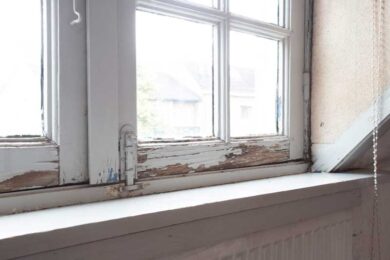Expert Lead Paint Removal Company-- Offering All NYC Boroughs
Expert Lead Paint Removal Company-- Offering All NYC Boroughs
Blog Article
Important Devices and Approaches for Reliable Lead Offense Clean-up
Addressing lead offenses efficiently necessitates an extensive approach that blends the right tools with critical approaches. The initial step involves furnishing employees with Individual Safety Devices (PPE) to safeguard their health and wellness. Simultaneously, the usage of specialized cleaning devices, such as HEPA vacuums and lead-specific cleaner, is essential for detailed impurity removal. Efficient control techniques, including plastic bed linen and adverse air pressure systems, are vital to prevent the spread of unsafe products. Secure disposal methods and rigorous adherence to regulative standards guarantee liable handling of hazardous waste. However what are the nuanced strategies that genuinely make a difference?
Individual Protective Equipment
Personal protective equipment (PPE) is a crucial part in the reliable monitoring of lead contamination cleaning. The important PPE for lead cleanup includes respirators, protective apparel, gloves, and eye defense.
Respirators, specifically those outfitted with HEPA filters, are indispensable for filtering system air-borne lead particles, preventing inhalation. Safety clothing, including coveralls and non reusable suits, avoids lead dust from adhering to workers' garments, decreasing the danger of secondary contamination.
In addition, strenuous training on the proper use and upkeep of PPE is important. Workers have to be informed on wearing and doffing procedures to stay clear of contamination. Regular examinations and replacements of PPE parts are needed to keep their protective capacities, ensuring a risk-free and certified cleanup operation.
Specialized Cleaning Tools

One more necessary device is the wet/dry vacuum, which can successfully clean up both dirt and fluid pollutants. These vacuum cleaners often include HEPA filters to give an additional layer of safety. Wet cleans or tack towels are also important for surface area cleansing; they are specifically developed to catch and hold lead fragments, decreasing the danger of spreading out contamination.
For even more persistent down payments, specialized lead-removal cleaner are required. These agents are created to damage down lead fragments, making them easier to remove. Scrub brushes with durable bristles can assist in this process, particularly on rough surfaces where lead dust has a tendency to adhere much more strongly.
In addition, encapsulants are made use of to secure lead-contaminated surface areas, preventing the launch of lead dirt. These specialized paints and coatings are designed to stick to various substrates, offering a long-lasting service for lead containment.
Effective Control Techniques
Effective containment approaches are vital in mitigating the spread of lead contamination throughout cleanup tasks. Executing durable control approaches guarantees that lead particles do not migrate to unaffected locations, thereby protecting both workers and the atmosphere (DOH & HPD Lead Violation Removal NYC).

To improve containment, encapsulants can be related to surfaces that are not being eliminated or disturbed. These specialized coatings bind lead dirt, reducing its schedule for resuspension. Additionally, all workers must put on ideal Personal Safety Equipment (PPE), consisting of respirators and disposable fits, to avoid contamination spread.
Safe Disposal Practices
Making sure secure disposal methods is a crucial part in the monitoring of lead contamination cleanup. Correct disposal mitigates the danger of lead returning to the environment and endangering public health and wellness. The initial step is to determine and set apart lead-contaminated waste from various other materials. Protected control using heavy-duty, watertight containers is essential to avoid splilling throughout transport.
Moving lead waste requires adherence visit our website to rigorous guidelines. Utilizing accredited contaminated materials service providers ensures that the materials are handled responsibly. Paperwork, including materializes outlining the type and quantity of waste, ought to go along with shipments to track the waste from the site of origin to its final disposal destination.
Designated dangerous waste disposal facilities are geared up to handle lead-contaminated materials securely. These centers often use innovative approaches such as stablizing, solidification, or chemical treatment to reduce the effects of the lead before disposal. Landfilling in specialized, lined areas that prevent leachate from polluting groundwater is a typical practice for last disposal.
Normal training for personnel involved in lead garbage disposal is critical to keep safety standards and prevent accidental direct exposure. By adhering to these practices, companies can considerably reduce the ecological and health and wellness impacts related to lead contamination.
Regulatory Conformity Tips

Adhering to governing compliance is extremely important in the successful implementation of lead contamination clean-up. Understanding and adhering to federal, state, and neighborhood regulations ensures not only the safety and security and health and wellness of individuals however also the lawful and financial well-being of the cleaning organization. The Epa (EPA) sets rigorous standards, such as the Lead Improvement, Repair Work, and Painting (RRP) Policy, which mandates proper accreditation and training for professionals taking care of lead-based activities.
Conformity starts with an extensive analysis of applicable laws and policies. Organizations should remain upgraded on any legislative changes, which can be helped with with routine training sessions and signing up for industry updates. Documentation is one more vital conformity element; keeping thorough documents of all tasks, consisting of examination records, employee training logs, and disposal manifests, is important.
Furthermore, engaging with certified lead inspectors or risk assessors guarantees that lead risks are properly identified and reduced. Companies must apply making use of Personal Protective Tools (PPE) and make sure that safety and security procedures are purely adhered to. Transparent interaction with stakeholders, including employees, clients, and governing bodies, will foster a society of compliance and liability, eventually contributing to a more secure and a lot more effective lead cleanup procedure.
Conclusion
Reliable lead infraction clean-up demands the integration of specialized devices and critical methodologies to ensure security and efficiency. Personal protective devices (PPE) advice safeguards employees from direct exposure, while safe disposal practices and stringent adherence to regulatory conformity are crucial for responsibly handling harmful waste.
Report this page